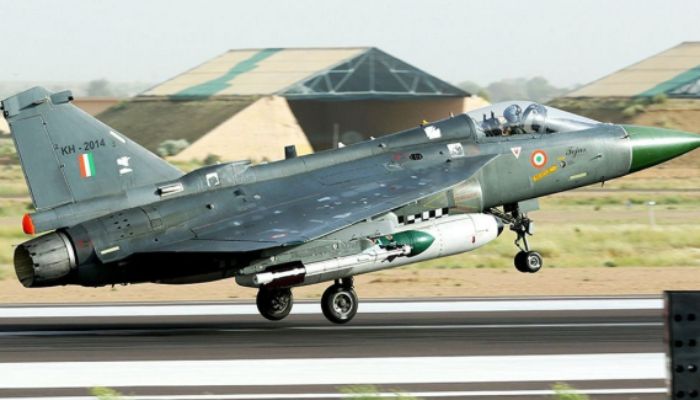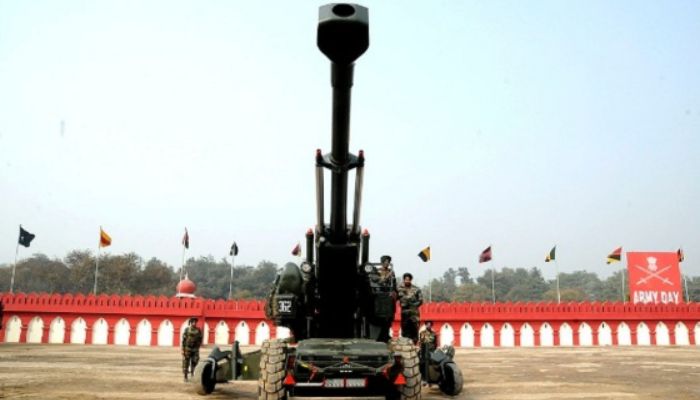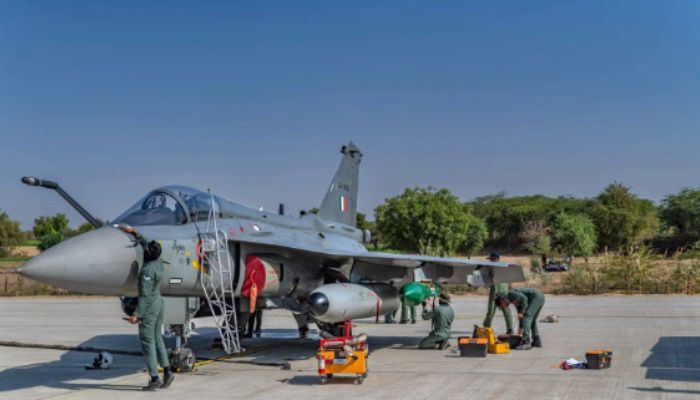Indian Air Force (IAF) Chief Air Chief Marshal Amar Preet Singh has openly criticized the country’s defence procurement processes, highlighting chronic delays and lack of accountability in delivering vital military systems. Speaking at the CII Annual Business Summit, the Air Chief sounded an alarm over missed deadlines, broken promises, and the urgent need to bridge the widening gap between contract signings and actual deliveries.
His most scathing remark — “Many times, we know while signing contracts that those systems will never come” — underscores a deeply rooted crisis in India’s defence manufacturing ecosystem, especially in the context of indigenous platforms like the Tejas Mk1A fighter aircraft.

The Tejas Mk1A Delay: A Rs 48,000 Crore Concern
The Air Chief pointed specifically to the Light Combat Aircraft (LCA) Tejas Mk1A project — a cornerstone of India’s push for self-reliance in defence — which has failed to deliver even a single unit despite a mammoth ₹48,000 crore contract signed with Hindustan Aeronautics Limited (HAL) in February 2021. According to the initial schedule, deliveries were expected to begin in March 2024. However, there has been zero progress on this front, prompting serious concerns about India’s ability to meet its defence timelines.
He further added that not only is the Tejas Mk1A behind schedule, but the Tejas Mk2 prototype is yet to roll out, and the much-anticipated stealth Advanced Medium Combat Aircraft (AMCA) remains in the conceptual phase with no prototype in sight.
Broken Promises and Trust Deficit
“Why should we promise something that cannot be achieved?” the Air Chief questioned during his address, pointing out the lack of transparency and realistic planning in the Indian defence sector. His comments reflect growing frustration within the armed forces over repeated delays that compromise operational readiness.
The Air Chief emphasised the need to go beyond the ‘Make in India’ narrative and move towards ‘Design in India’. “We need trust between the forces and industry,” he said, urging for openness and accountability. “Once we have committed to something, we should deliver.”
Impact on Operational Readiness
The delays are not merely administrative hiccups — they impact India’s combat preparedness at a time when regional tensions remain high. Referring to Operation Sindoor, a retaliatory mission launched in May 2025 following a deadly terror attack in Jammu and Kashmir, the Air Chief drew attention to the evolving nature of warfare and the necessity of technological agility.

“Operation Sindoor has given us a clear idea of where we are headed and what we need in future,” he said, stressing the urgency to modernise and equip the forces with cutting-edge systems.
A Call for Private Sector Involvement
In a notable development, Air Chief Marshal Singh announced that the AMCA project had been cleared for private sector participation. “This is a very big step, and that is the kind of confidence that the nation has in private industry today,” he remarked. The move is seen as a significant shift towards public-private collaboration, aimed at reducing dependence on sluggish public sector units like HAL.
A Pattern of Warnings
This isn’t the first time the Air Chief has raised such concerns. Upon assuming office in October 2024, he remarked that India had once outpaced China in military technology but had since lost that edge. He cited poor production rates as a major reason for the lag and urged immediate reforms.
In February 2025, a leaked audio clip captured him expressing disappointment in HAL’s failure to deliver the promised 11 Tejas Mk1As. “HAL is just not in mission mode,” he was heard saying while seated in a HJT-36 Yashas cockpit.
What Lies Ahead
The Air Chief’s strong words have ignited fresh debate around India’s defence preparedness and the viability of its indigenisation goals. His critique has put both public and private sector players under the spotlight. For India’s defence ecosystem to evolve into a reliable and efficient engine of national security, systemic reforms, accountability, and faster decision-making are imperative.
The Air Chief summed it up best: “We have to be now-ready to be future-ready.” The time for complacency is over. With rising threats and changing warfare dynamics, India’s defence production must shed its sluggish image and step up to meet the demands of the future.
Frequently Asked Questions
1. Why is the Tejas Mk1A project delayed?
The Tejas Mk1A project has faced production and developmental delays from Hindustan Aeronautics Limited (HAL). Despite a contract signed in 2021, not a single aircraft has been delivered as of mid-2025.
2. What did the Air Chief say about HAL?
Air Chief Marshal Singh expressed lack of confidence in HAL, citing delays and unmet commitments. In a leaked audio clip, he stated HAL is “not in mission mode.”
3. What is Operation Sindoor?
Operation Sindoor was a retaliatory strike launched by India in May 2025 in response to a terror attack in Jammu and Kashmir, reportedly killing over 100 terrorists linked to Lashkar-e-Taiba.
4. What is the AMCA project and what’s new about it?
The AMCA (Advanced Medium Combat Aircraft) is India’s planned stealth fighter jet. Recently, it has been opened to private sector participation, a major shift in policy.
5. What reforms did the Air Chief recommend?
He stressed the need for realistic timelines, stronger public-private partnerships, indigenous design capabilities, and greater accountability to ensure timely delivery of defence projects.











